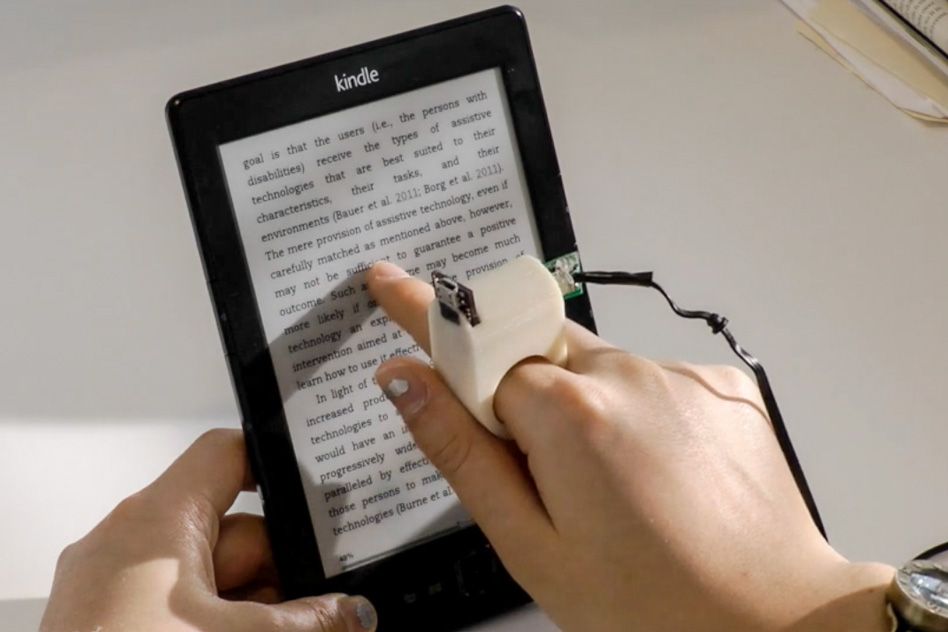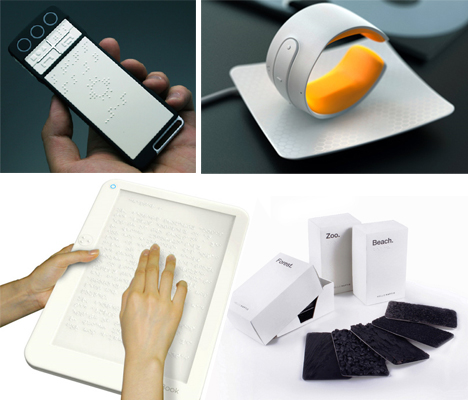Screen Readers for the Blind: Essential Tools for Digital Access
Screen Readers for the Blind: Essential Tools for Digital Access
Blog Article
A Guide to Life-Changing Assistive Modern Technology for the Blind and Visually Damaged
The improvement of assistive innovation has ushered in a transformative period for individuals who are visually impaired or blind, offering tools that boost autonomy and improve everyday experiences. Developments such as wise navigating devices and AI-driven applications are redefining just how customers communicate with their environments, while easily accessible reading remedies and wise home technologies promise to further boost the high quality of life.
Smart Navigating Equipment
Smart navigation tools are reinventing the means people who are blind or aesthetically impaired interact with their atmosphere. These sophisticated innovations, which integrate GPS, audio feedback, and haptic signals, offer individuals with essential details about their environments, boosting their freedom and mobility.
One prominent example is making use of smart walking canes furnished with sensing units that identify challenges and give real-time feedback via resonances or audio signs. These devices enable users to navigate complex environments, such as active roads or crowded public areas, with enhanced confidence. Additionally, wearable tools, such as smart glasses, are being established to help in identifying faces, checking out text, and recognizing objects, even more augmenting the user's spatial recognition.
Furthermore, clever navigating tools are increasingly incorporating man-made knowledge to examine data and adjust to users' choices. This customized approach not just boosts navigating effectiveness but likewise fosters a feeling of empowerment among customers. As innovation remains to development, the potential for clever navigation tools to produce an extra obtainable and comprehensive globe for individuals that are blind or aesthetically impaired stays appealing, inevitably reshaping their daily experiences and communications.
Innovative Mobile Applications
Mobile applications are arising as effective devices for helping people that are blind or aesthetically impaired, using a variety of capabilities that boost daily living. These applications harness advanced technology to facilitate everyday tasks, enhance accessibility, and promote freedom.
One group of ingenious mobile applications focuses on visual acknowledgment. Applications like Be My Eyes connect individuals with sighted volunteers via video phone calls, making it possible for real-time assistance for tasks such as reading labels or browsing unfamiliar environments. Likewise, applications like Seeing AI use expert system to define surroundings, reviewed text, and recognize objects, offering users with vital info at their fingertips.
An additional substantial location is navigating and orientation. Apps such as Aira and Nearby Traveler give audio assistance, aiding users navigate urban spaces easily. They offer customized help, enabling for a much more positive exploration of the atmosphere.
Additionally, health and wellness applications satisfy specific needs, such as medication monitoring and health and fitness monitoring. These applications aim to cultivate an all natural technique to health, making sure that individuals can keep their health and wellness independently.
Wearable Assistive Instruments
Wearable assistive gadgets represent a substantial advancement in innovation developed to support individuals that are visually damaged or blind. These tools enhance mobility and independence by offering real-time feedback concerning the surrounding setting. Among the most notable wearable modern technologies are wise glasses equipped with cams and sensors, which can identify challenges and relay important information through sound cues.

One more ingenious option consists of wrist-worn gadgets that make use of ultrasonic waves to identify barriers and provide navigational aid. These tools usually feature personalized settings, permitting individuals to tailor the notifies to their particular requirements.
The integration of synthetic knowledge in wearable assistive modern technology is likewise noteworthy, as it constantly improves the precision and responsiveness of these tools. Generally, wearable assistive tools are transforming the lives of the blind and visually impaired, promoting better autonomy and improving quality of life through ingenious solutions.
Easily Accessible Reading Solutions
Easily accessible reading options play a vital role in allowing people who are blind or aesthetically damaged to involve with text across various styles. These services incorporate an array of technologies and devices created to enhance reading experiences, from conventional print products to electronic web content.
One prominent service is Optical Character Recognition (OPTICAL CHARACTER RECOGNITION) technology, which converts printed text right into electronic layout, allowing customers to pay attention to or review the content using screen visitors. Additionally, specialized e-readers equipped with text-to-speech abilities use personalized analysis experiences, allowing users to change font sizes and background colors for enhanced exposure.
One more efficient approach is braille screens, which supply tactile comments by transforming electronic message right into braille. This enables people to check out with touch, promoting higher self-reliance and accessibility to literary works. Mobile applications created for checking out scanned documents or publications can encourage customers with immediate access to a huge collection of products (Wearable technology for low vision).

Smart Home Technologies
Smart home modern technologies have changed the method people that are aesthetically impaired or blind interact with their living settings, improving both freedom and safety. These cutting-edge remedies utilize automation and connectivity to develop an available home customized to the demands of customers.
Smart speakers and voice-activated assistants offer hands-free control over various devices, permitting customers to change protection, temperature, and lighting actions via basic voice commands. This performance reduces dependence on sighted aid and promotes a sense of autonomy. Additionally, clever illumination systems can be click now customized to supply auditory responses or tactile signs, making it possible for individuals to navigate their homes better.
Additionally, safety and security systems equipped with wise video cameras and sensing units can send real-time informs to individuals, boosting personal safety and security without requiring aesthetic confirmation. Automated door locks supply peace of mind, permitting users to safeguard their homes effortlessly.
Incorporating clever home technologies not only enhances everyday living however additionally urges social interaction through connected gadgets - OCR devices for the blind. With recurring advancements in assistive technology, the future appears promising, as more solutions will emerge to further encourage people that are blind or aesthetically damaged, making sure an extra independent and comprehensive way of living
Final Thought
Finally, the innovations in assistive modern technology for the aesthetically impaired and blind represent a significant leap toward boosting independence and quality of life. Smart navigating devices, cutting-edge mobile applications, wearable tools, available reading remedies, and smart home innovations jointly foster an inclusive environment. This combination of innovation not just enhances movement and daily living yet additionally empowers individuals to involve fully with their surroundings, promoting greater autonomy and involvement in culture.
Technologies such as clever navigating tools and AI-driven applications are redefining how customers interact with their environments, while easily accessible reading solutions and smart home technologies promise to additional raise the quality of life. As technology proceeds to development, the potential for clever navigating devices to produce an extra inclusive and easily accessible globe for individuals that are blind or visually impaired continues to be appealing, ultimately improving their day-to-day experiences and communications.
Wearable assistive tools represent a substantial innovation in technology designed to support individuals that are blind or aesthetically damaged. Among the most significant wearable innovations are wise glasses computer glasses blue light outfitted with cameras and sensing units, which can identify obstacles and relay important details via sound check that hints.
Smart navigating tools, ingenious mobile applications, wearable gadgets, obtainable reading services, and wise home modern technologies jointly promote an inclusive atmosphere.
Report this page